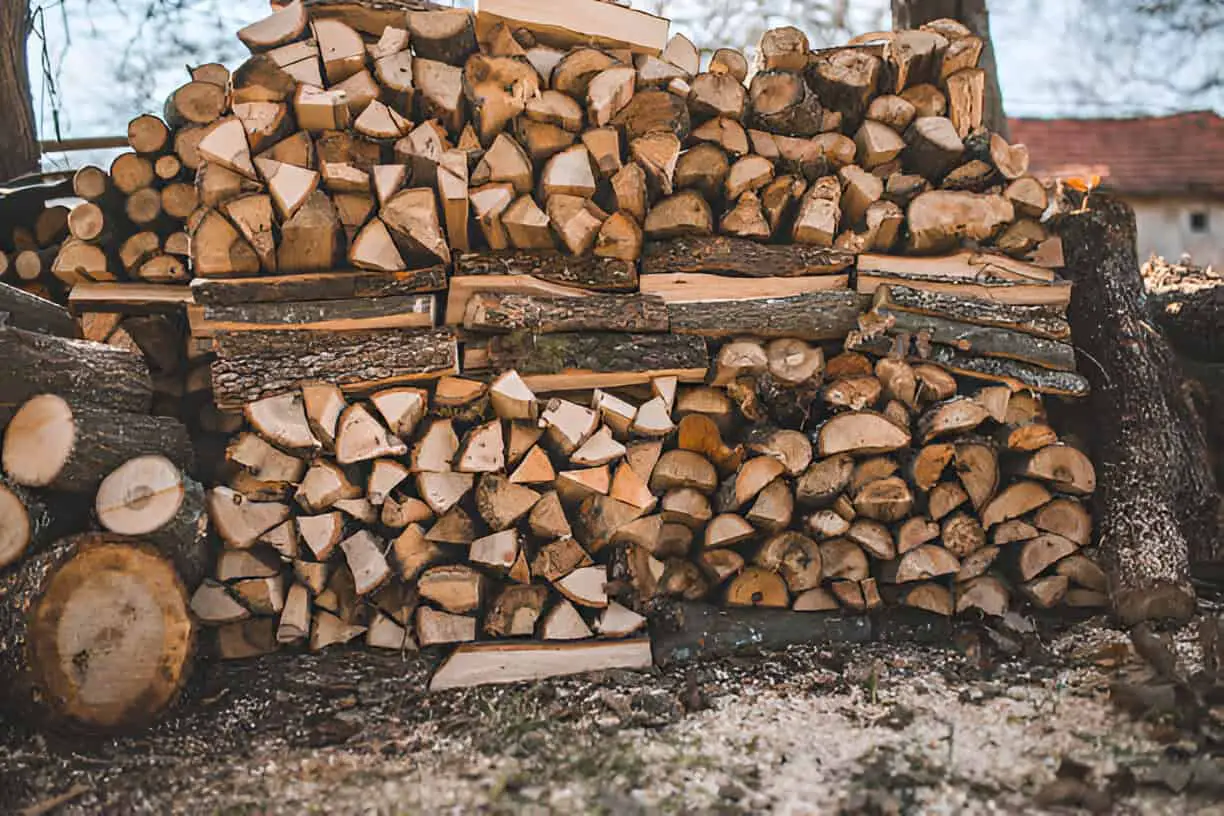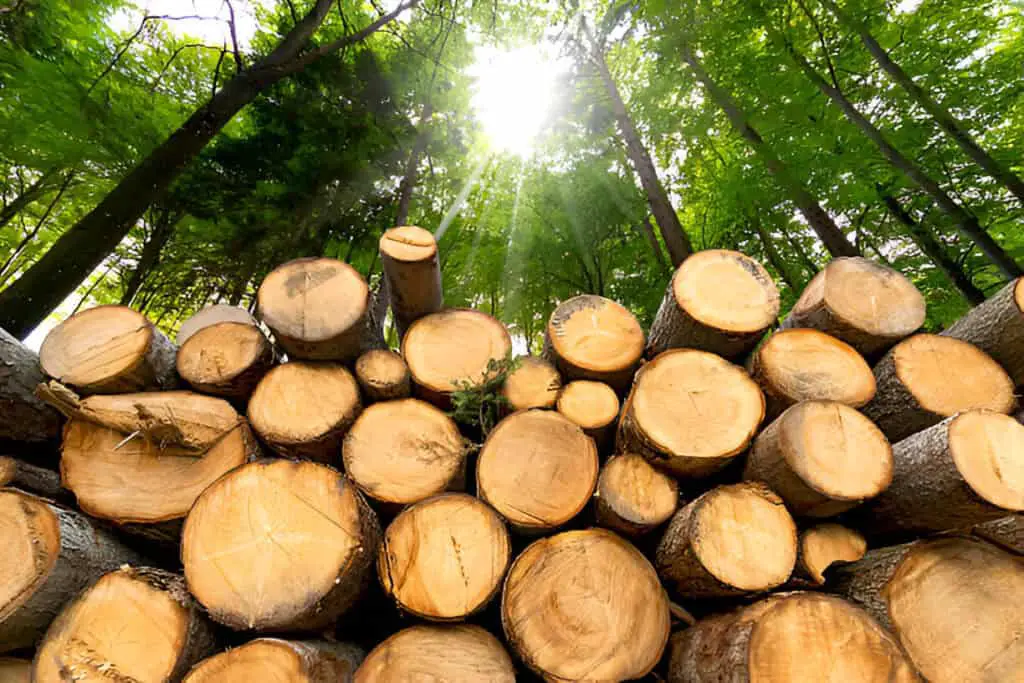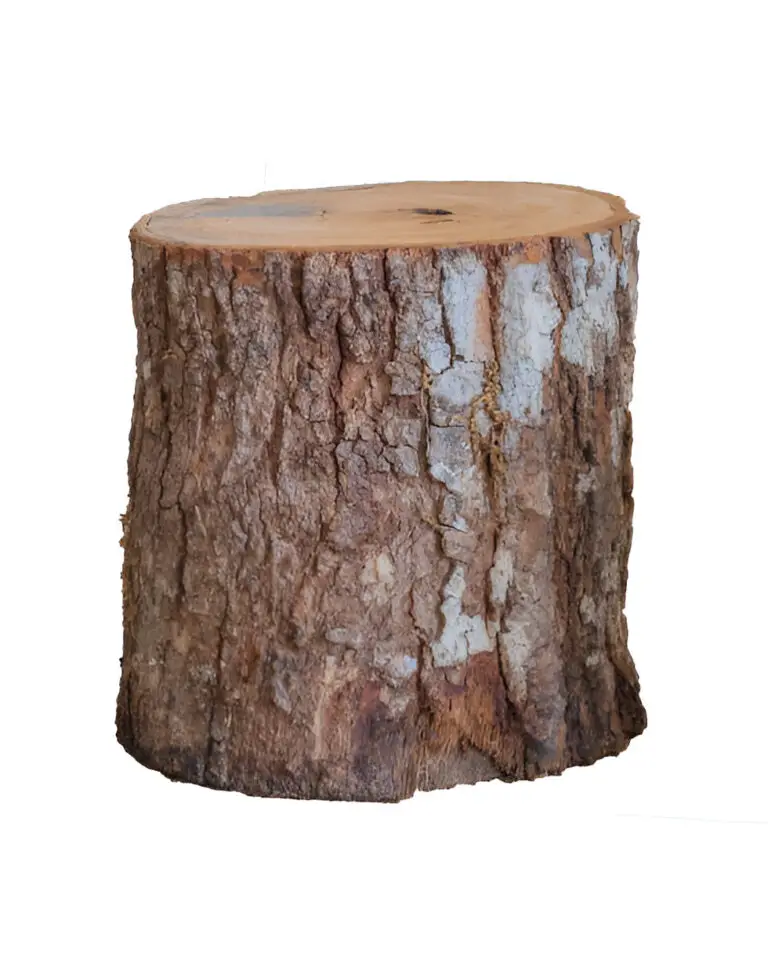How to Season Firewood Efficiently: Tips for the Perfect Burn

There’s no better way to minimize your dependence on central heating this winter than by taking advantage of your home’s fireplace. Assuming you have dry firewood, you can build fires to radiate heat throughout your home.
But you can’t use just any wood lying around your landscape. Before using it in your fireplace, you need to “season” it.
In this article, we’ll uncover the secrets behind seasoning firewood effectively. From understanding moisture content to choosing the right storage methods, we’ll equip you with all the knowledge you need for optimal results.
Whether you’re a seasoned outdoorsman or an occasional fireplace user, mastering this essential skill will enhance your fireside experience and make every gathering around the hearth even more memorable. Get ready to ignite your passion for perfect fires!
Understanding Firewood Types

Choosing the right type of firewood is just as crucial as the seasoning process itself. Hardwoods, like oak, hickory, and maple, are often praised for their density and high heat output. They burn slower, produce more coal, and typically yield a longer-lasting fire.
On the other hand, softwoods such as pine and spruce ignite quickly and are ideal for kindling; however, they tend to burn faster and generate more creosote buildup in chimneys if used excessively.
Beyond simple classifications of hardwood versus softwood lies an intriguing world of regional wood varieties that cater to specific climates and burning preferences. For instance, cherry wood not only offers a delightful aroma but also imparts a subtly sweet flavor that enhances grilling experiences.
Similarly, fruit trees like apple or peach add unique characteristics that can elevate both indoor fireplaces and outdoor bonfires into occasions filled with warmth and mouthwatering scents.
What Is Wood Seasoning?
When used in the context of firewood, the term “seasoning” refers to the act of drying firewood so that it burns more efficiently.
When a tree is still growing, it contains a lot of moisture. Even after being cut down, it will retain most of its moisture.
Seasoning is designed to lower the moisture content of wood, resulting in better firewood.
How to Season Firewood Effectively (Step-by-step Guide)
Seasoning firewood is essential to ensure that it burns efficiently and produces less smoke. Starting with freshly cut logs can be tempting, but unless they’re properly seasoned, your firewood may struggle to ignite and burn hot enough. Here’s how to get it right.
Step 1: Split the Wood
First, split the wood into smaller pieces. Larger logs take longer to dry out, so splitting them helps the moisture evaporate more quickly. The size of your splits will depend on the type of wood and how you plan to burn it.
Step 2: Stack the Wood
Once split, stack the wood in a way that allows air to circulate around each log. A well-ventilated stack helps moisture escape from all sides. Leave space between the logs, and stack them off the ground using pallets or a wood rack to prevent moisture from soaking into the wood from the soil.
Step 3: Choose the Right Location
Pick a sunny spot for your stack. Sunlight helps dry the wood, and adequate airflow speeds up the drying process. Avoid shady areas or places where the wood will be exposed to the elements, such as rain or snow, without proper cover.
Step 4: Wait for the Wood to Season
Most wood needs to season for at least six months to a year. Hardwoods like oak and hickory can take up to 12 months, while softwoods like pine and fir can season in 6–9 months. You can tell when the wood is properly seasoned if it’s lighter in weight, has cracks at the ends, and produces a hollow sound when struck.
Step 5: Test the Moisture Content
To make sure your wood is ready to burn, you can test its moisture content using a moisture meter. Ideally, firewood should have a moisture content of 20% or less for optimal burning. Firewood with higher moisture content can create excess smoke and burn inefficiently.
After allowing your firewood to dry for at least six months, you can then use it to build fires in your fireplace, fire pit or elsewhere.
| Also read: Why Is My Boxwood Losing Leaves |
Proper Firewood Storage
Storing firewood properly is key to keeping it dry, seasoned, and ready to use when you need it. First, seasoned firewood should be kept off the ground to prevent moisture from seeping in. Stacking the wood on a raised platform or pallet allows for better airflow around the wood, which is essential for maintaining its dryness and usability. If you’re storing wood outdoors, pick a location with plenty of sunlight and good air circulation.
When it comes to choosing between indoor and outdoor storage, consider convenience and climate. Storing firewood indoors offers quick access, but you should only bring in small amounts to avoid pests. For outdoor storage, a sturdy cover or shelter is a must. Use a tarp, but leave the sides open for airflow; this shields the wood from rain and snow without trapping moisture.
To make access easier during winter, keep the woodpile close to your home but far enough to minimize fire risk. Proper storage not only keeps your firewood dry but also ensures each log is ready to burn when you need it.
Common Mistakes to Avoid When Seasoning Firewood
Seasoning firewood properly is essential for getting the best performance from your fire. If done incorrectly, it can lead to inefficient burns, excess smoke, and even damage to your fireplace or stove. To help you get the most out of your firewood, here are some common mistakes to avoid when seasoning and storing it.
1. Stacking Wood Too Tightly
One of the most frequent mistakes when seasoning firewood is stacking it too tightly. For proper seasoning, the wood needs enough space for air to circulate around each log. Without adequate airflow, the moisture trapped inside the wood takes longer to evaporate, leading to wood that remains wet and difficult to burn. Instead of stacking your firewood in a dense pile, leave some space between each log to allow air to move freely and dry out the wood efficiently.
2. Choosing the Wrong Location
Where you store your firewood plays a major role in how well it seasons. A common error is stacking firewood in a shady or damp area, which hampers the drying process. Sunlight is crucial to reducing moisture content in the wood. Always aim to store your firewood in a location that receives plenty of direct sunlight, ideally for most of the day. A sunny spot will speed up the seasoning process, leaving you with dry, ready-to-burn wood.
3. Improper Ground Storage
Stacking firewood directly on the ground may seem like an easy option, but it’s actually one of the worst things you can do. When wood is placed on the soil, it can absorb moisture from the ground, which delays the seasoning process. It also invites pests like termites, ants, and rodents. To avoid this, use a platform, pallet, or other elevated surfaces to keep your firewood off the ground. This allows better airflow around the logs and prevents moisture buildup.
4. Wrapping Wood in Plastic Tarps
While it’s essential to protect your firewood from rain and snow, covering it entirely with a plastic tarp is a mistake. Plastic traps moisture inside, which can result in the wood becoming damp and difficult to season. Instead, cover only the top of your stack with a tarp or breathable cover. Leave the sides open to allow for ventilation, which helps prevent moisture from being trapped inside the stack.
5. Stacking Wood Against Exterior Walls
Stacking firewood against the walls of your home may seem like a convenient storage solution, but it can create significant problems. For one, the wood can attract pests such as termites, ants, and rodents, which can make their way into your home. Additionally, the moisture in the wood can transfer to the walls, which may cause rot or mold to develop over time. To avoid these issues, keep your firewood at least a few feet away from your home and store it in a well-ventilated area.






